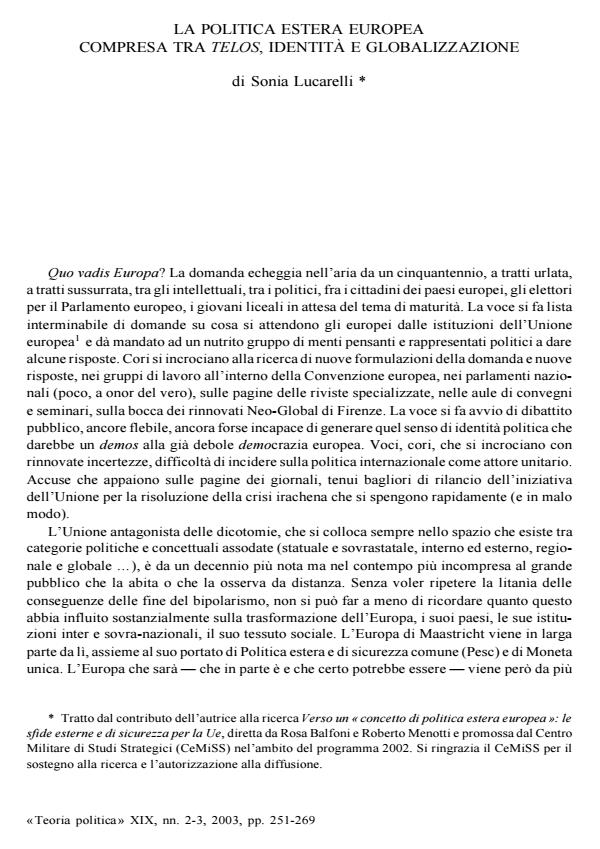La politica estera europea compresa tra telos, identità e globalizzazione
Journal title TEORIA POLITICA
Author/s Sonia Lucarelli
Publishing Year 2004 Issue 2003/2-3
Language Italian Pages 19 P. File size 72 KB
DOI
DOI is like a bar code for intellectual property: to have more infomation
click here
Below, you can see the article first page
If you want to buy this article in PDF format, you can do it, following the instructions to buy download credits

FrancoAngeli is member of Publishers International Linking Association, Inc (PILA), a not-for-profit association which run the CrossRef service enabling links to and from online scholarly content.
Quo vadis Europa? The question seems to be an ever-green one, as the nature of this political system is deeply interlinked with its direction, its telos. The initial telos of the Union was constructed around a set of common values: democracy, solidarity, economic growth were tools to construct a more secure environment in post World War II Europe. An institution that has developed around this founding ideas could not but produce a conception of policy, even included foreign policy, that contains this aspiration. It is most of all for this reason that the Union had developed a mainly ÇstructuralÈ foreign policy, aimed to tackle the deep causes of conflict more than its manifestations. It is equally for this reason that we frequently assist to a call for Europe which has a stabilising effect in contemporary world politics, and which adopts an ethics of responsibility in its external relations. However, the credibility of a structural power depends also on its ability to defend its values with other means when structural foreign policy fails. Therefore, the realization of an international actor that balances between structural and traditional foreign policy is functional to the full realization of the Union as a full-fledged political system.
Sonia Lucarelli, La politica estera europea compresa tra telos, identità e globalizzazione in "TEORIA POLITICA" 2-3/2003, pp , DOI: